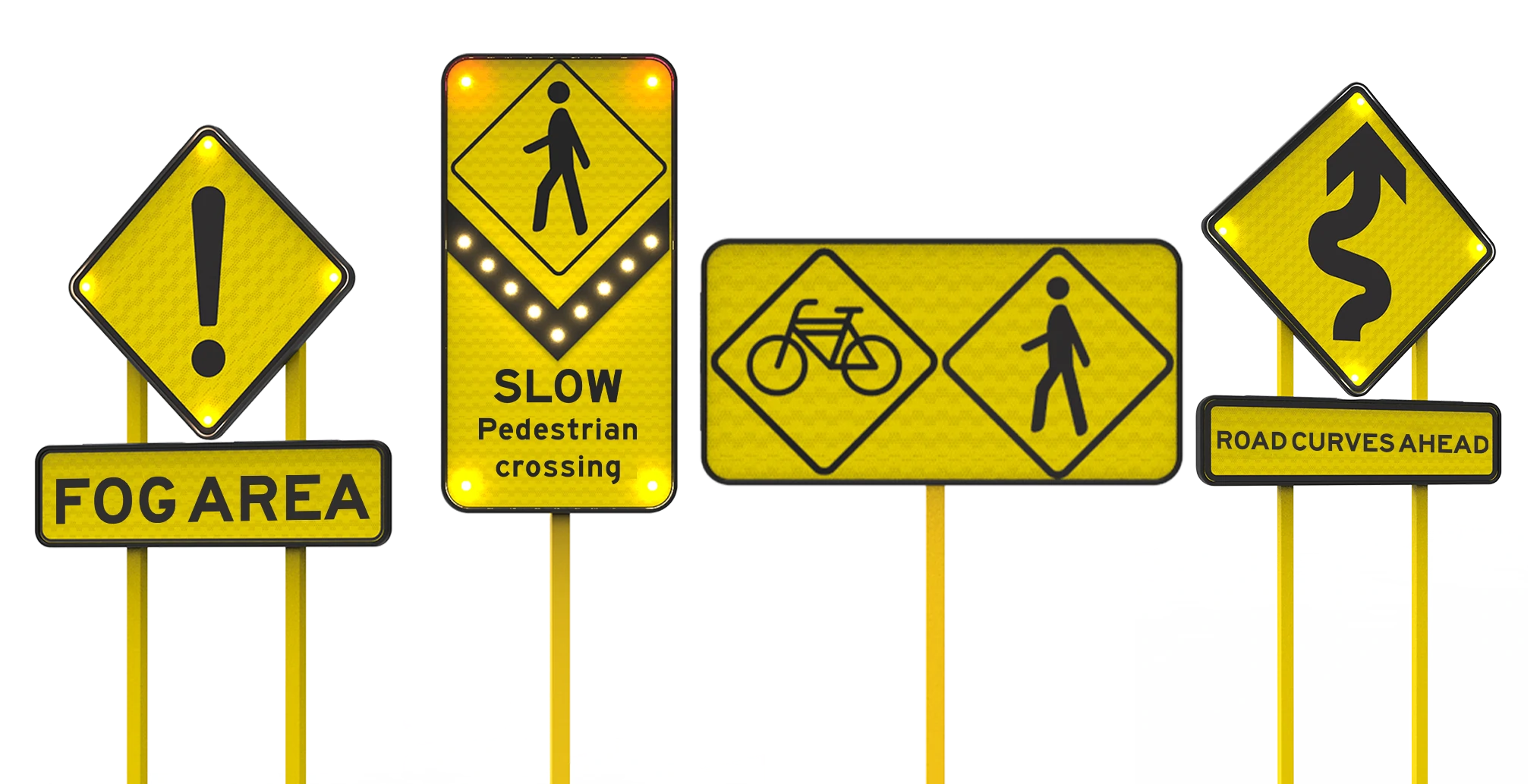
In everyday traffic, every sign can make a difference. Yellow road signs are a vital part of road safety, helping prevent accidents by warning of potential hazards ahead. Their color is no coincidence—yellow stands out easily, even in low light or adverse weather conditions. This makes them essential for alerting drivers to curves, speed bumps, school zones, crossings, and other common risks on public roads.
Although these signs don’t issue direct commands like “Stop” or “Go”, they play a vital role in road safety by delivering clear and timely warnings. They remind drivers to stay alert and adjust their speed as needed. Whether in urban streets, highways, or rural roads, their mission is to protect every road user—from pedestrians and cyclists to drivers. Thanks to their reflective materials, they remain visible day and night, ensuring drivers notice the warning in time to prevent hazardous situations.
What types of warnings do these signs provide?
Yellow is the color used to warn about conditions that may compromise safety. These signs don’t instruct drivers to take a specific action but draw attention to what may lie ahead. Their role is to provide information in advance so drivers can be ready.
For instance, they may indicate sharp curves, speed bumps, or pedestrian-heavy crossings. They are also placed on roads with uneven surfaces, near school zones, at right or left turns, on two-way roads, or in areas prone to landslides. In rural areas, they can even alert drivers to the presence of animals.
By providing advance warning, these signs enable drivers to make calm, well-informed decisions. Being aware of what lies ahead allows them to brake, change lanes, or simply reduce speed—greatly lowering the risk of accidents.
How can you recognize these signs?
Although all these signs share a yellow background, there are many different types. Each one uses a simple symbol to show what’s happening on the road. For example, a curved arrow indicates a dangerous turn, while a walking person signals a pedestrian crossing. Other signs feature bicycles, animals, or lane changes, helping drivers anticipate and navigate potential hazards with confidence.
Most of these signs may include text, but even without it, drivers can understand the message at a glance. That’s why their design is so clear. Most are shaped as diamonds or squares, featuring easily recognizable black icons.
Their design follows the standards set by Mexican law, ensuring consistent functionality across the entire country. These signs are part of a visual system that organizes traffic and helps maintain safety in both urban and rural areas.
Take a look at some of the most widely used yellow road signs
SPEED BUMP: This yellow sign, featuring the word “BUMP” and a downward arrow, warns drivers about an upcoming speed reducer. It helps prevent sudden braking and enhances pedestrian safety in urban areas. A clear, straightforward way to encourage adherence to speed limits.
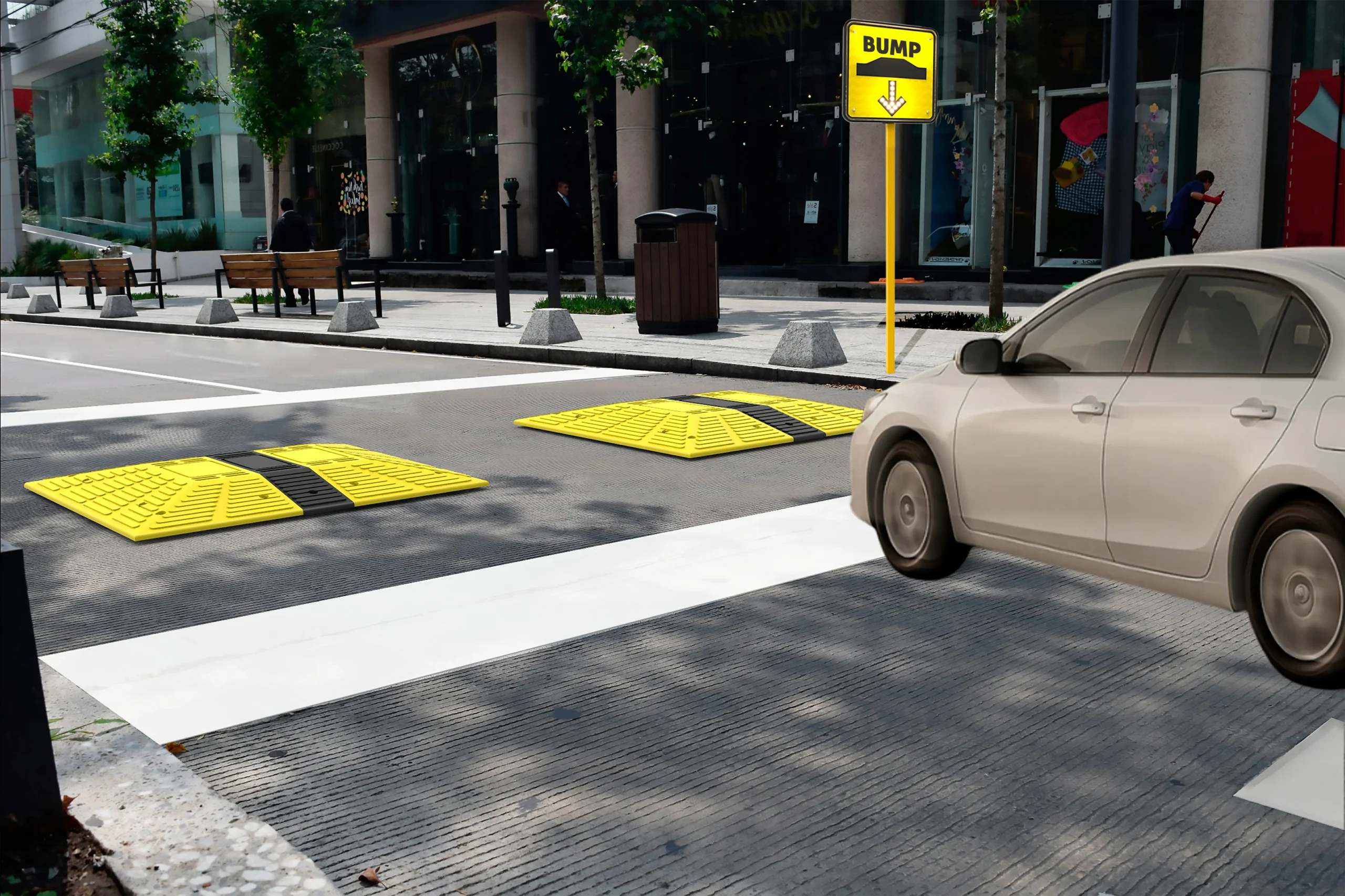
Bicycle Sign: The sign featuring a bicycle pictogram indicates the presence of a bike lane or a crossing exclusively for cyclists. Its purpose is to alert drivers to slow down and yield to bicyclists.
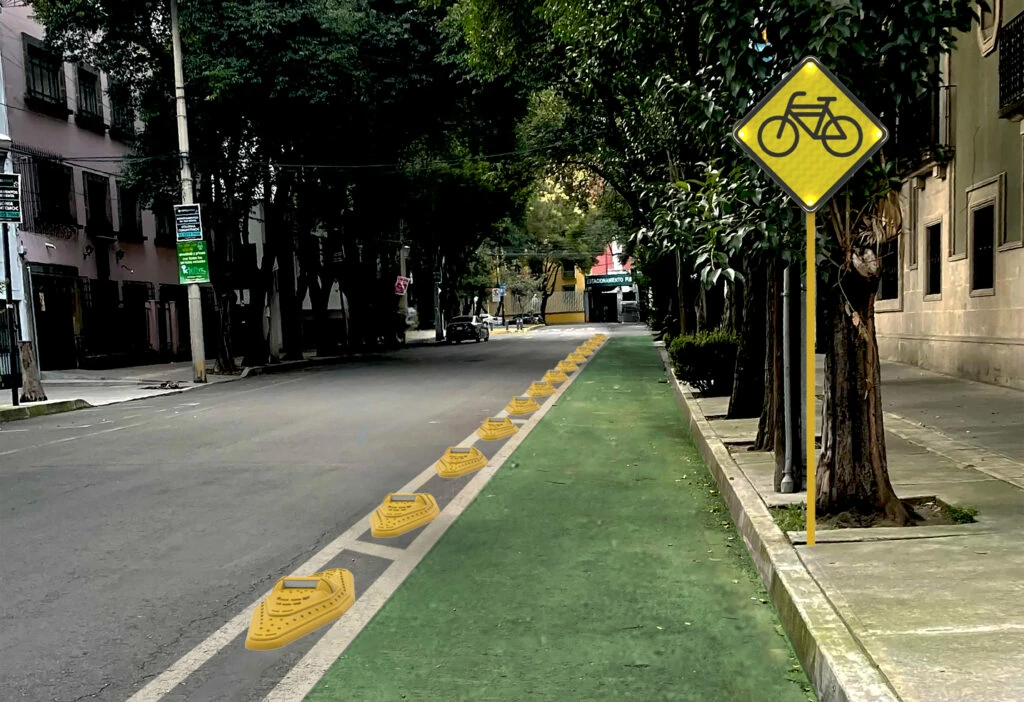
Roundabout: This sign features the symbol of a roundabout, indicating that drivers should slow down and yield to vehicles already circulating within the intersection. It is essential for maintaining orderly traffic flow at circular junctions.

School Zone: Featuring a pictogram of two figures crossing along with the text ‘SCHOOL ZONE,’ this sign alerts drivers to the presence of students near the roadway. Extra caution is strongly advised, particularly during school drop-off and pick-up tim
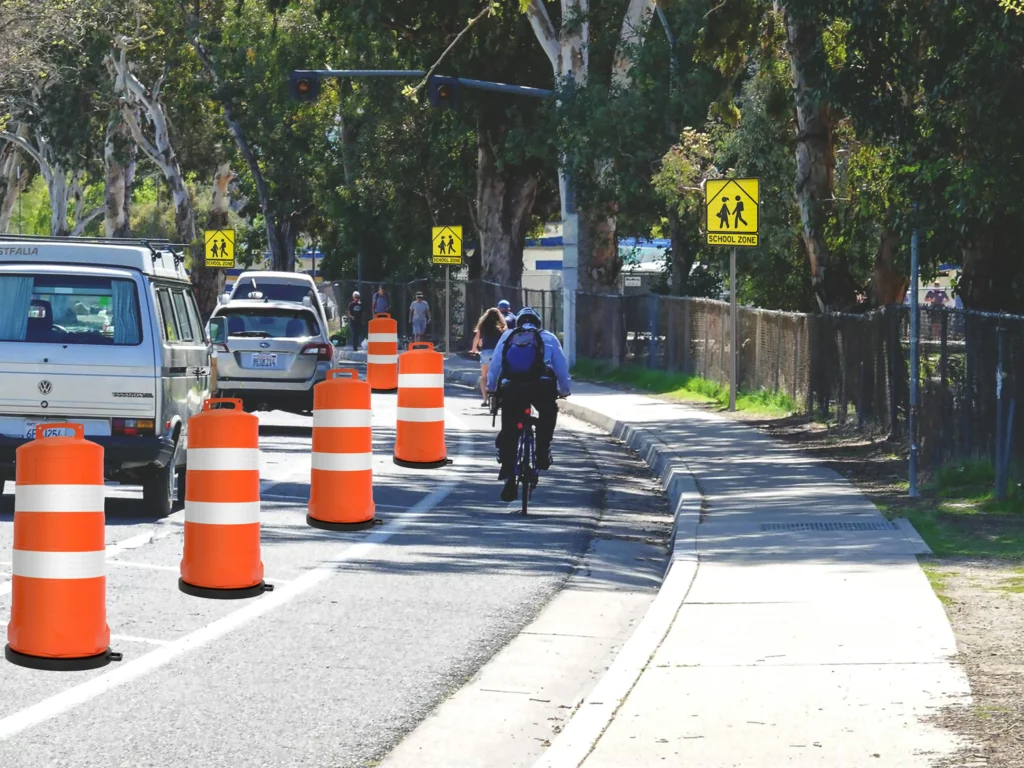
Pedestrian Crossing: This sign illustrates individuals walking across marked lines, indicating a designated area where pedestrians have the right of way. Frequently installed in zones with high foot traffic, it plays a critical role in improving visibility and minimizing the risk of accidents—particularly at night or in low-light environments.
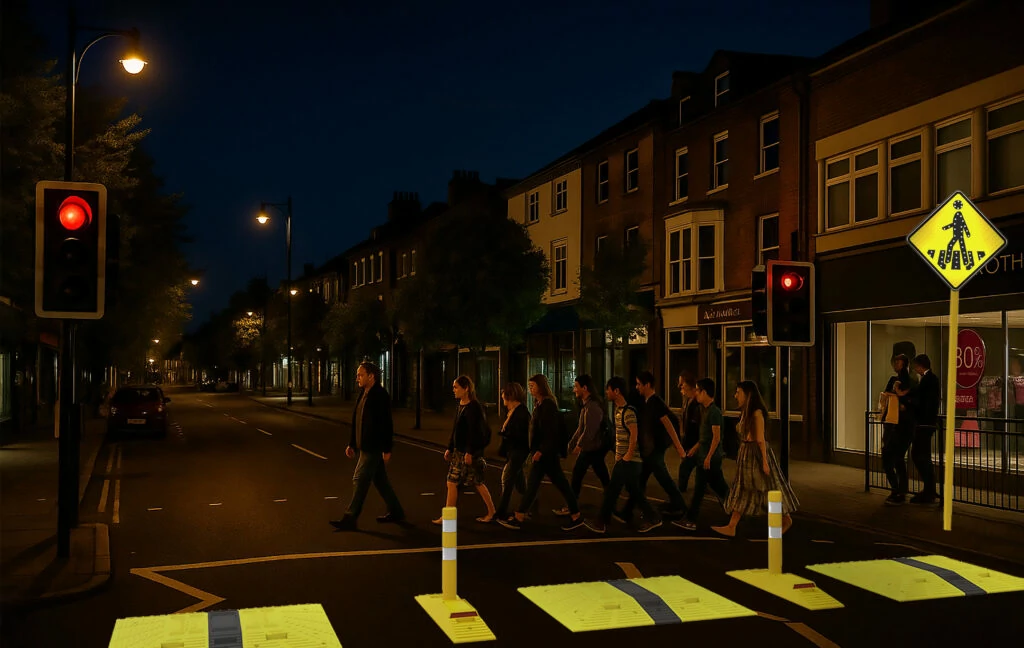
Where should signs be placed?
To be effective, these signs must be installed exactly where needed. It’s not just about placing them, but knowing the right locations. For example, if there’s a sharp curve with poor lighting, the sign should be positioned in advance to give drivers enough time to slow down.
In school zones, the sign should be visible well before the crossing—not just at the exact location. The same applies to speed bumps, busy pedestrian streets, or areas with slow-moving traffic. On rural roads, signs may warn of potholes, steep slopes, or animals.
Proper placement makes all the difference. It helps prevent accidents and ensures safer roads for everyone. That’s why it’s essential to follow legal regulations when installing them.
Why yellow road signs matters?
These signs provide benefits from the very first moment. They help organize traffic, allowing drivers to anticipate what’s ahead and drive more calmly with fewer mistakes. They also help prevent accidents, especially in school zones or areas with limited visibility.
Another advantage is their durability. Many signs are made of metal with a protective coating or from sturdy polymer, allowing them to withstand rain, sun, and dust without deteriorating quickly. This reduces replacement and maintenance costs.
Additionally, because they are used nationwide, these signs are easily recognized by drivers. Whether someone is from the city or the countryside, the message is understood the same way. This consistency helps maintain road safety across both urban and rural areas.
What does the standard say in Mexico?
Mexican law, through NOM-034-SCT2-2022, specifies exactly how these signs should be designed. It sets the standards for size, color, shape, material, and placement. Yellow signs must feature black symbols and be installed at a height that ensures visibility for all road users.
Following this standard is not optional. It is a rule that both companies and government authorities must comply with when carrying out roadworks. Using well-designed and properly installed signs is a clear way to protect lives.
A sign that really works
Yellow road signs save lives. They help prevent collisions, pedestrian accidents, and moments of confusion on public roads. Simple, clear, and effective, they work equally well in city streets and rural roads, including areas with high population density or public transportation routes.
Investing in this type of signage is a responsible action. Whether for a municipality, a company, or a road improvement project, installing well-designed signs in the right locations is a tangible way to enhance the safety of millions of people in their daily lives.
Make Safety Your Priority! If you enjoyed this blog, we invite you to share it on your social media.
